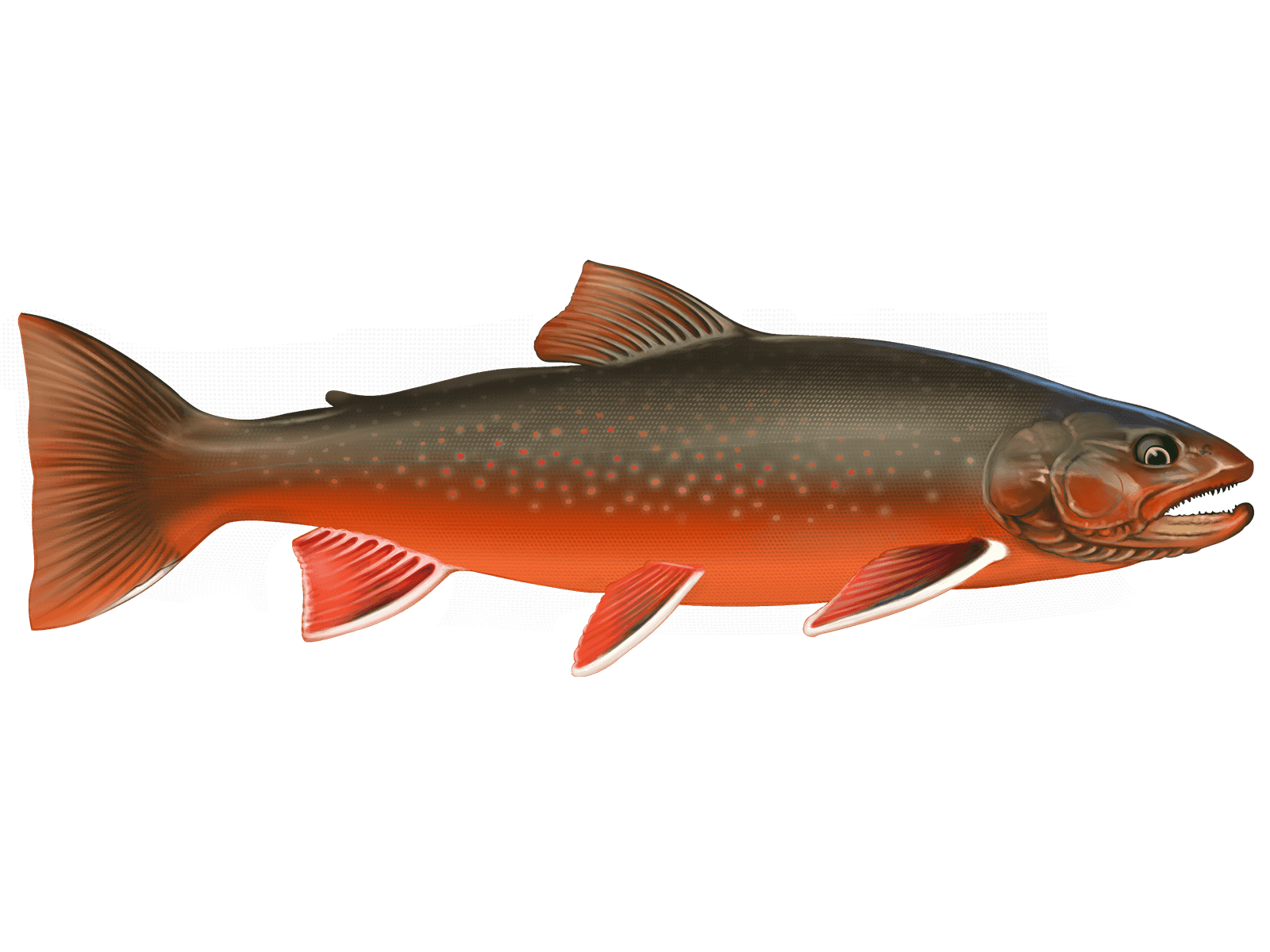Arctic Char

Species Details
Salvelinus alpinus
Salmonidae
Salmoniformes
Cold Water River, Stream, Pool
12 - 25 lbs.
10" - 42"
Arctic Char (Salvelinus Alpinus) Fish Description
Arctic Char is a brackish fish related to the trout and salmon fish, all of which are part of the Salmonidae family. Although they migrate from saltwater to freshwater, most of these species remain in freshwater lakes and rivers for most of their life. Arctic Char have darkish brown or green back and sides. They have small scales that shine silver when hit by the sun. The color of their belly varies from red to yellow, even a pearly white. When Arctic Char are spawning, their belly becomes bright red. A major way to identify them from their salmon cousins is to look at the spots. An Arctic Char has light pink or white spots on its sides, while salmon have dark spots.
Interesting Facts
- More than a recreational fish, the Arctic Char is best known for its taste. It is a deliciously mild fatty fish that is easy to cook. It also has delicate skin that makes it a perfect choice for pan-frying.
- Arctic Char is an environmentally friendly alternative to farmed salmon.
- Because this species is mostly distributed in the northern areas of Canada and Alaska, the Arctic Char is a culturally significant food source for Inuit and northern communities. The Inuits of Canada typically freeze the fish and eat them like popsicle sticks.
- The Dolly Varden fish is their cousin, and it can be tough to tell them apart.
Size
The average Arctic Char grows to an average length of 11 to 29 inches. It can reach a maximum length of 38 inches, depending on the environment it grows in. This species can weigh up to 20 pounds, but it weighs about 0.7 to 3 pounds on average.
Spawning and Diet
The spawning of this species occurs from August to October. For anadromous Arctic Char, they move downstream to the sea to feed then move upstream to the lake to spawn. They lay their eggs on stones or gravel in water that is 9 to 16 feet.
Arctic Char feed on plankton, invertebrates, insect eggs, small fish, smelt, and vendace.
Fishing Habitat and Distribution
The Arctic Char is native to the northern waters of North America, Asia, Europe, Iceland, and Greenland, primarily on rivers, streams, lakes, and subarctic coastal waters. They remain in freshwater throughout the winter, which makes for good ice fishing.
Although they are mostly found in shallow waters of less than 3 feet deep, you may find some in waters up to 230 feet deep. The optimum temperature for this species is from 39 to 60 degrees.
Fishing Technique - How to Catch Arctic Char
Arctic Char are a strong fish, and the angler will have a good fight with this fish. If you're looking to fly fish, the best time of year in Alaska is from late May through early July as they congregate on rivers to feed on salmon as they migrate. However, if you are going later in the summer, don't worry; you will still find these fish well into September. Some of the largest Arctic Char can be found in the bigger lakes of Bristol Bay and the Brooks Range. However, we strongly suggest you get a guide especially if you are traveling to this great outdoors. They will know the best areas and correct baits.
Since these fish have a diet of plankton, invertebrates, insect eggs, small fish, and crustaceans, you will have various options for choosing the correct flies. Some good choices include large bright-colored lures such as leech and streamer imitations, smolt imitations, and beads, along with quite a variety of dry flies.
If you choose to spin cast, make sure to work with an 8 or 9-foot rod that has a fast spinning action. Large baits like heavy spinners work best with Arctic Char but it is best to observe the fishing location and ask the local fishermen for advice.
Since these fish are in shallow areas, they can be easily spooked by your shadow. Also remember not to overcast in a single spot.







